One of the places I have always wanted to travel is Greece. The mythology! The architecture! The sculptures! Who wouldn’t want to see this stuff up close and in person? Sadly, for one reason or another, I’m not much of a traveler – while I’ve been to several other states, the closest I’ve been to another country is Branson, which I’m guessing for many of you doesn’t really count (but I’m standing by that assessment).
Not too long ago, Mary, one of my dearest and closest friends, moved away from St. Louis and spent the next several months guilting me to come visit her in Nashville. As per usual, she wore me down. After getting down there, I found myself searching the internet for the biggest tourist traps Nashville has to offer when I found one that appealed to the closeted world traveler in me.
The Parthenon?
In Nashville, Tennessee?
Yes, Nashville’s moniker, “the Athens of the South,” was taken a little too literally by the Tennessee Centennial Exposition of 1897, where in celebration of the 100th anniversary of the state’s entry into the Union, they erected a full-size version of the Parthenon (even though Tennessee was admitted into the Union in 1896).
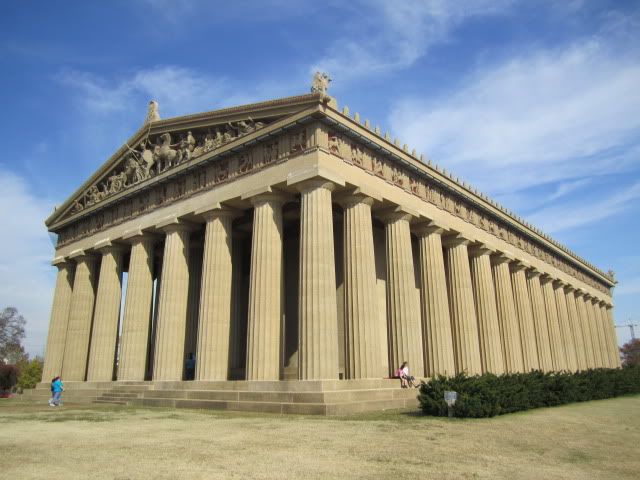
While the Greek version of the Parthenon was made primarily from marble, the Nashville Parthenon built for the celebration was made from plaster, wood, and brick. Later, in 1921, the Parthenon was rebuilt (again) in concrete, and was completed in 1931.
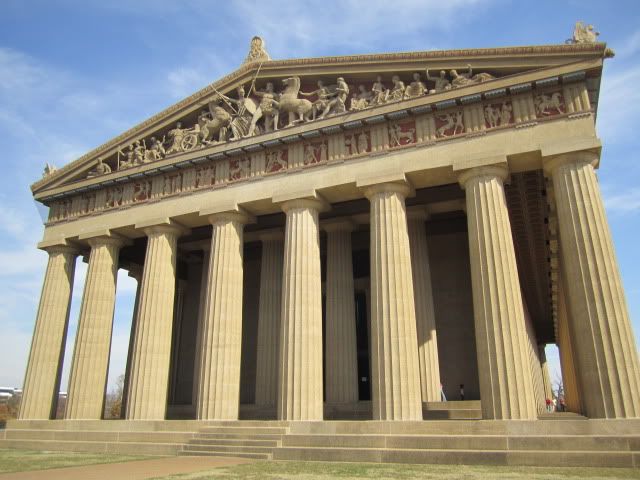
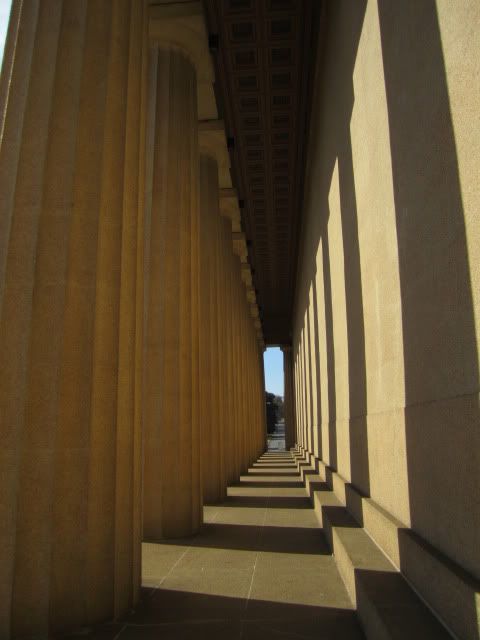
There are 46 Doric columns around the perimeter of the Parthenon, an addition 6 by each entrance, and even more on the inside.
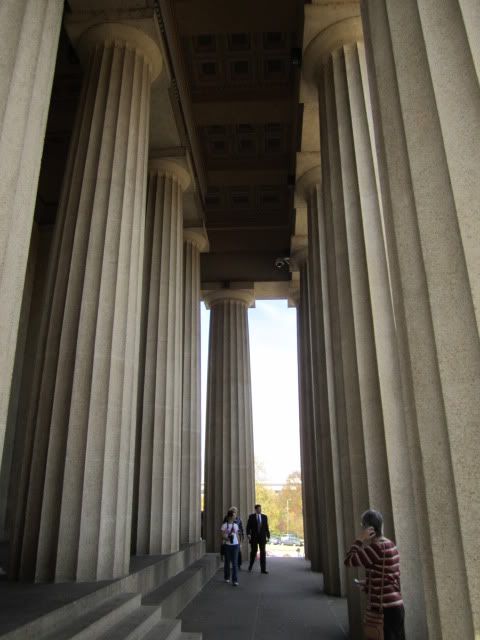
All of the exterior columns actually incline slightly inwards, even the corner columns. In fact, in an amazing feat of eye trickery, one of the design elements carried over from the Greek Parthenon to Nashville’s is that there are no straight horizontal lines in the Parthenon. Everything that looks horizontal actually arches slightly in the center. This is believed to make the Parthenon appear flawless to the human eye.
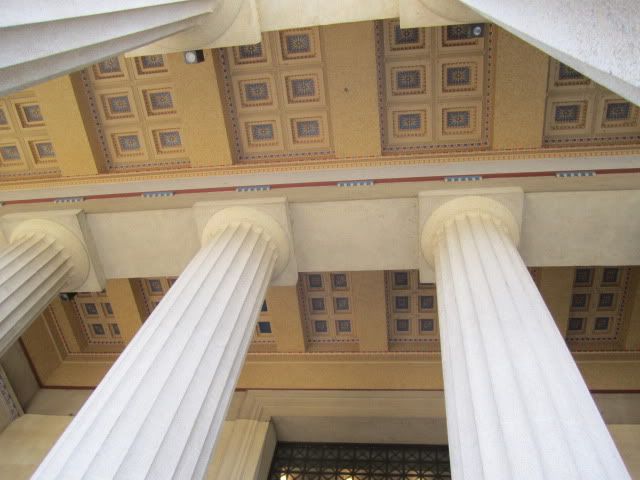
The lower level of the Parthenon is a serves as Nashville’s art museum and hosts a permanent collection of 63 paintings by 19th and 20th century American artists as well as additional gallery spaces for temporary exhibits. There is also a collection of photographs and memorabilia from the Centennial and the Parthenon’s construction. Unfortunately, cameras were not allowed on the lower level, so upward to the main event!
The interior of the Parthenon is divided into two rooms; this room is called the Naos and it houses the statue of Athena.

Random Dude, for scale
When the Nashville Parthenon was built, the only thing it was missing was a replica of the Athena Parthenos, so in 1982, the city commissioned Alan LeQuire to recreate the statue. The original statue, created by Pheidias, was constructed from ivory and gold and was actually lost by 400 A.D., so LeQuire had to rely on what little historical documentation there was to create his version of Athena.
LeQuire’s Athena was made from gypsum cement in many molds and each section was attached to a steel support. Construction was completed in 1990, but was left as a plain white statue for 12 years. In 2002, Athena was gilded, and details of her face, wardrobe and shield were painted.
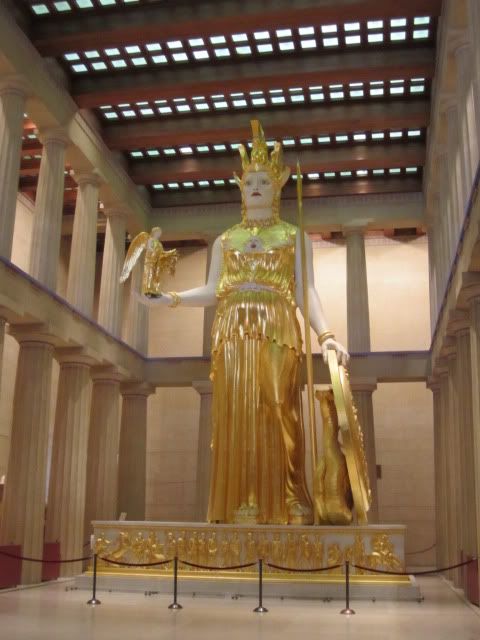
At 41’10”, Nashville’s Athena is the tallest indoor sculpture in the Western World.

Even at 6’4”, the statue of Nike seems diminutive when compared to Athena.
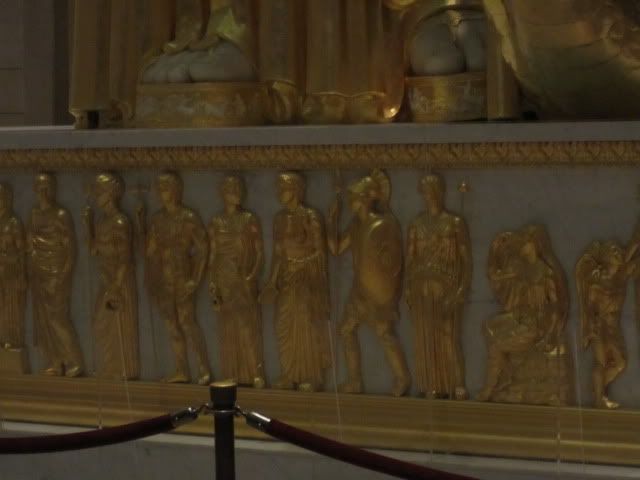
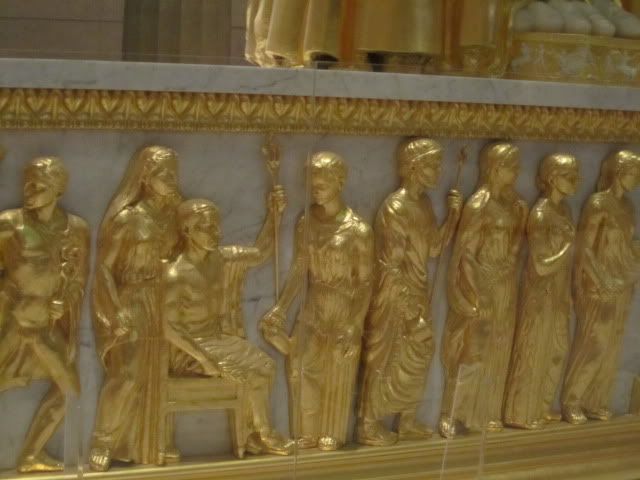

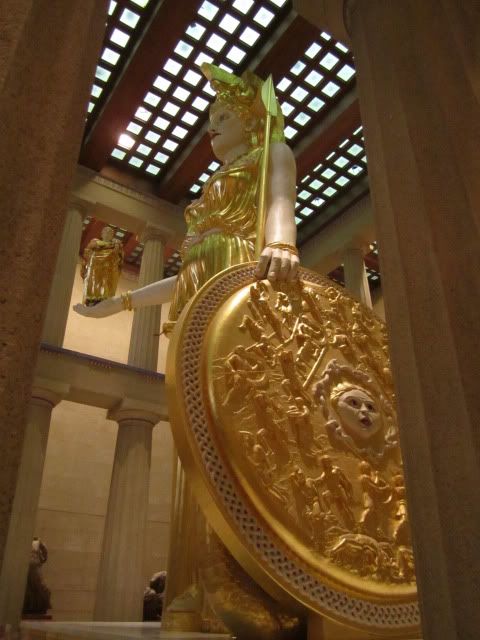
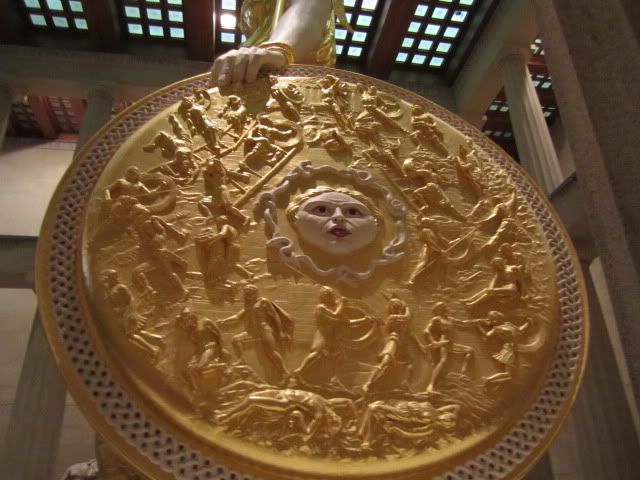

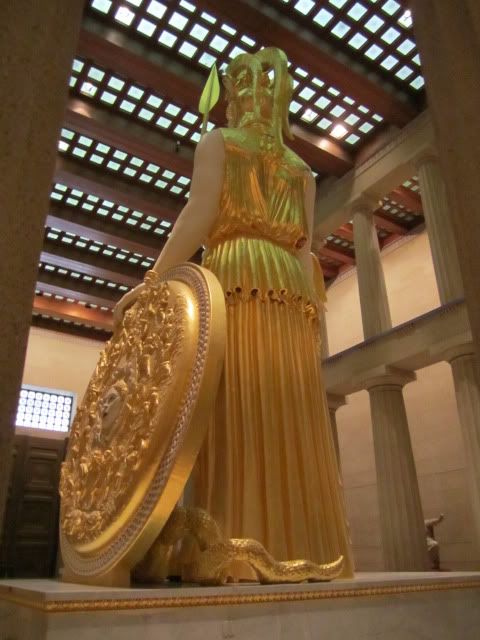
Actual conversation:
Mary: (whispering) Athena doesn’t have a butt.
Me: She’s a 42 foot tall white chick, what do you expect?
Mary: …
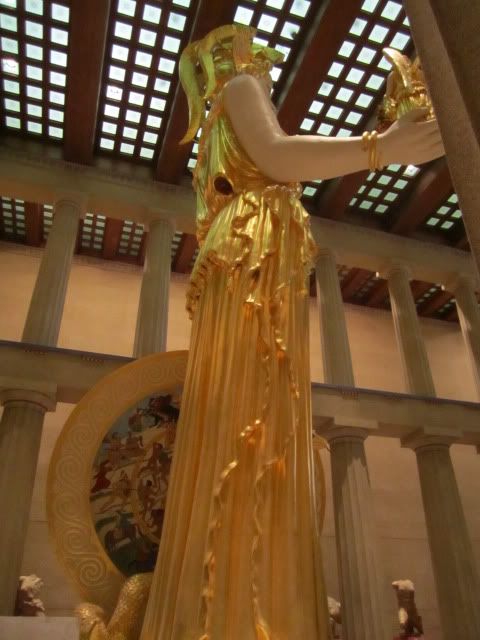
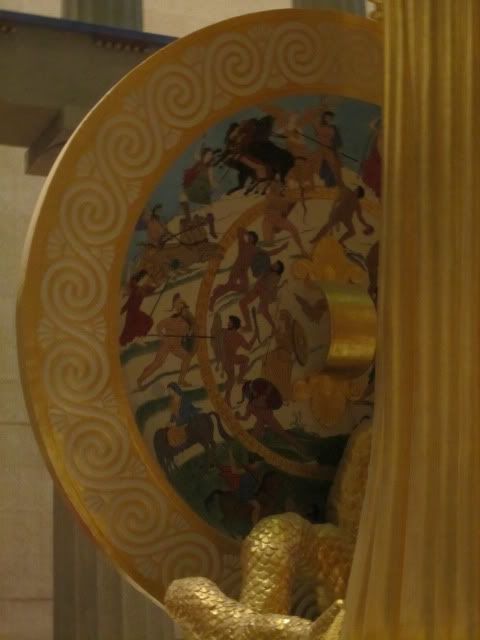
Along the walls of the Naos are full sized replicas of the statuary found in the pediments – the triangular bits seen on the outside of the Parthenon on the east and west ends. These fragments are known as the Elgin Marbles, and are replicas created from casts made from the originals fragments.
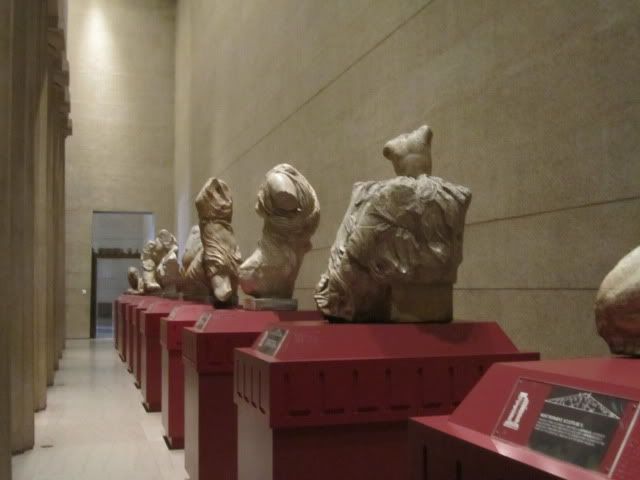
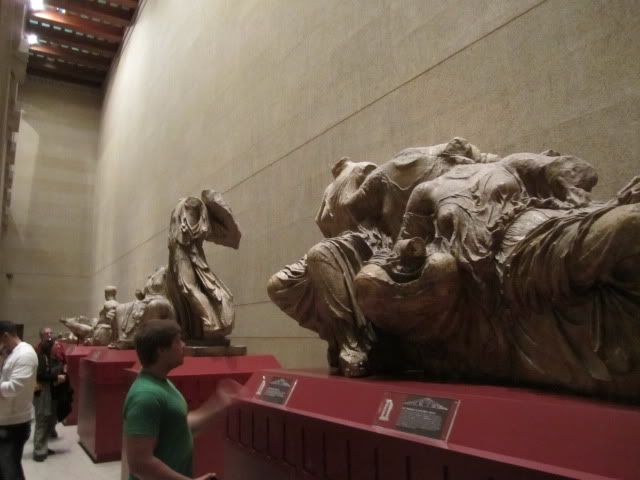
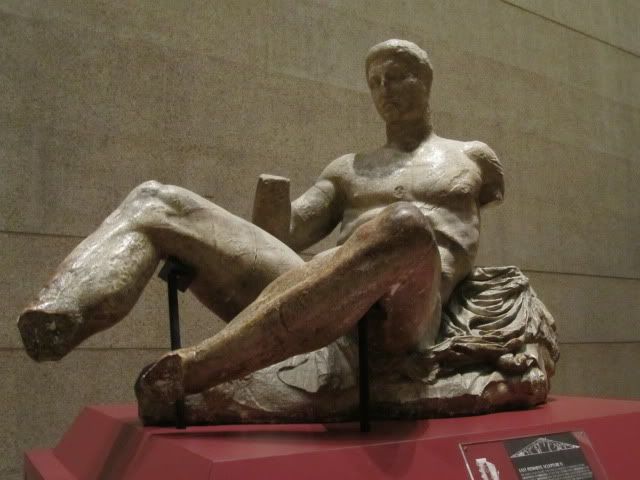
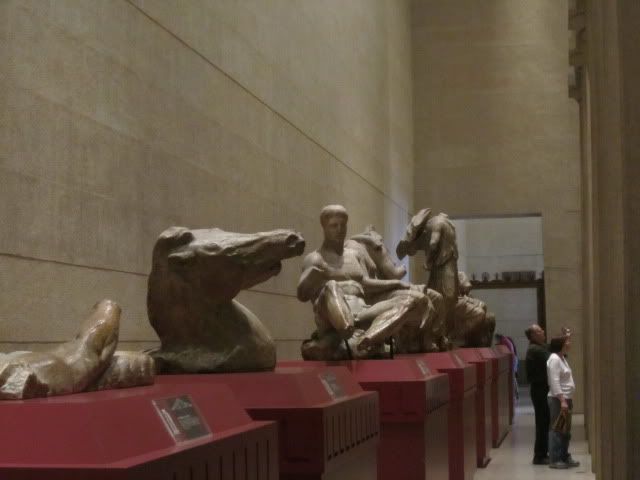
The other room of the Parthenon is the Treasury Room. In Ancient Greece, this was where Athena’s treasures were stored. The Treasury Room of the Nashville Parthenon was a little sparse, but it did have smaller replicas of the completed pediments so you can get a closer look and better idea of the detail put into them.
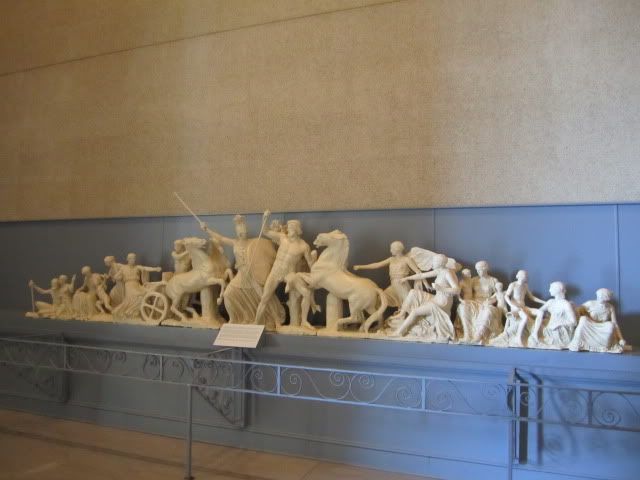


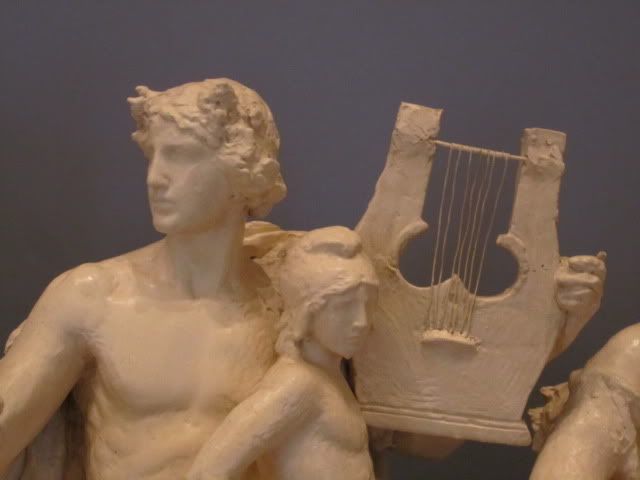
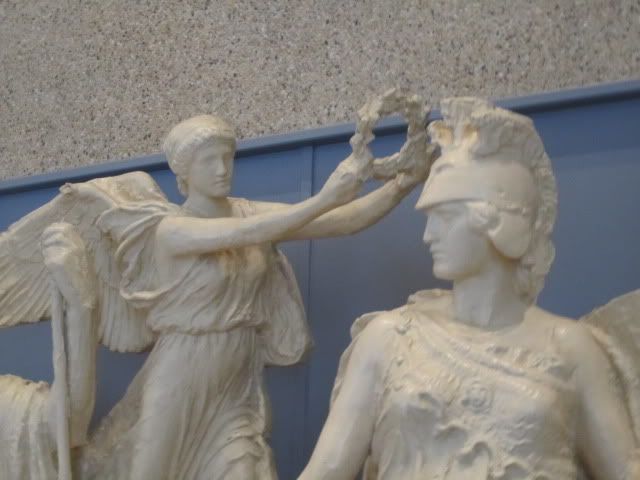
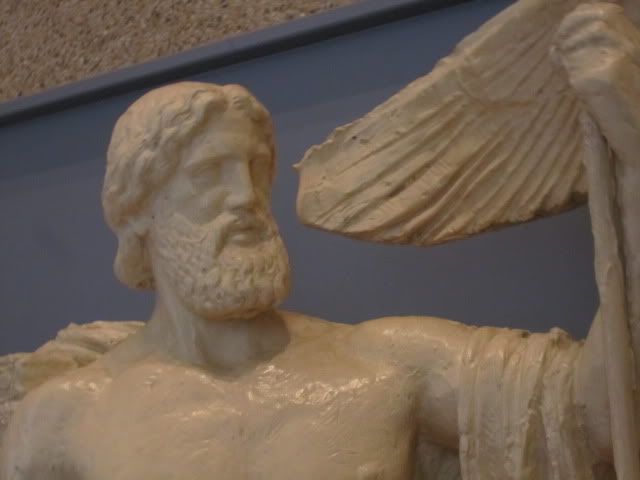
In both the Naos and the Treasury Room are a set of bronze doors. These doors are 24’ tall, 7’ wide and 1’ thick and weigh 7.5 tons each. The doors on the ancient Parthenon were made from wood with a bronze overlay.
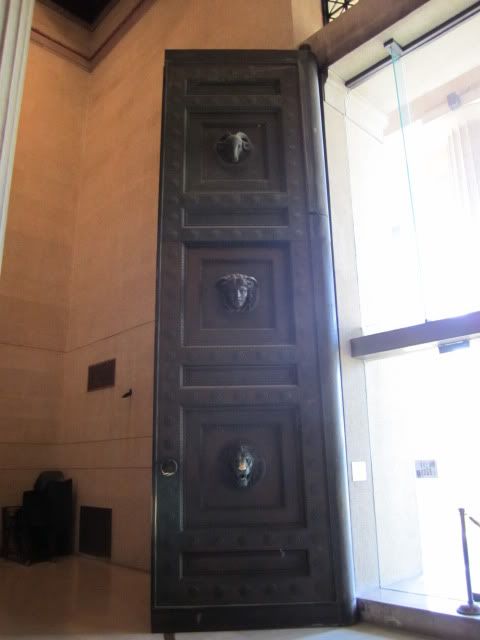
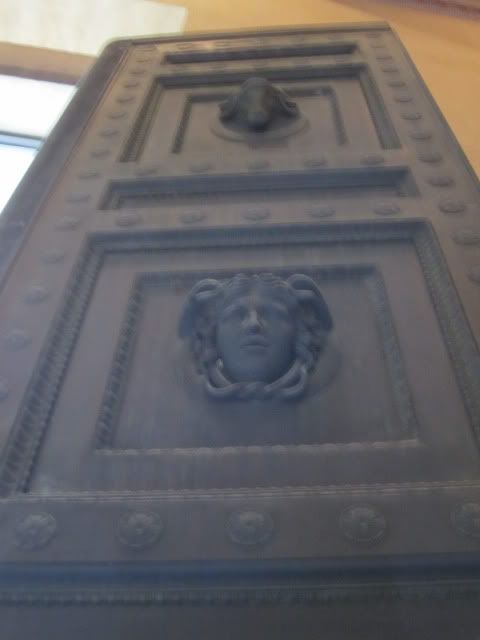
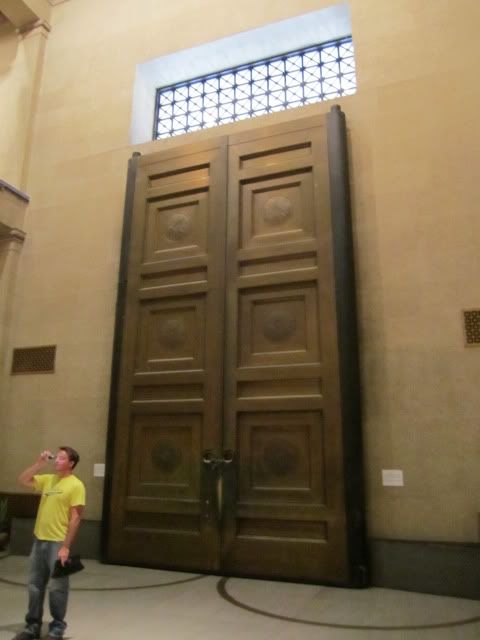
These were the set of doors back in the Naos. Again, random dude helps me out for scale purposes.
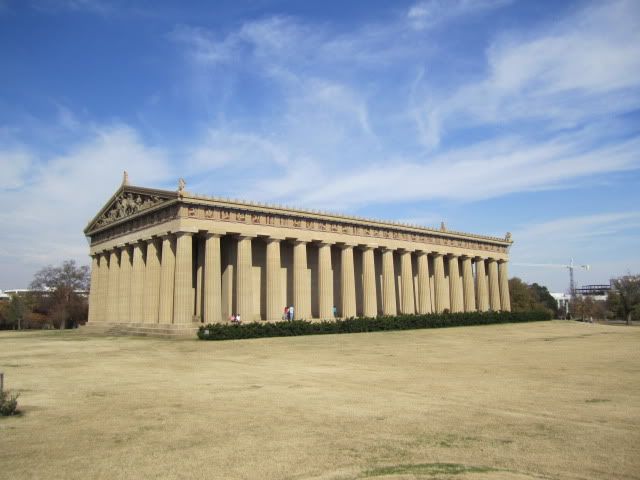
So, that was our trip to the Nashville Parthenon! If you want to know more, their website (http://www.nashville.gov/Parthenon/) has a TON of information and great educational resources, as well as more information about the art galleries on the lower floor.
I want to thank Beth for letting me play substitute for a week, and I want to thank my friend Mary for putting up with me for a weekend and showing me around her new home town. I look forward to adventuring in Nashville again!

No comments:
Post a Comment